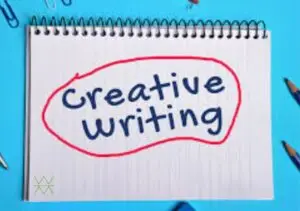Creative writing might be the most satisfying way for many to express their thoughts, emotions, and experiences through the word. While many writers rely on traditional methods such as outlining, and different forms of character development, there are lesser-known techniques that can help both new and experienced writers enhance their craft and unleash creativity.
Here are five unique creative writing methods that can help writers of all levels to break free from their established patterns and explore new horizons.
1. The Exquisite Corpse Method:
The Surrealist movement of the early 20th century created the Exquisite Corpse method as a collaborative writing technique.
Here’s how it works: A group of writers, or even a single writer working alone, takes turns contributing a line or a few words to a story or poem without knowing what came before or what will follow. The result is often a surreal, dream-like narrative that defies logical conventions.
2. The Erasure Technique:
Take an existing text, a page from a book, a newspaper article, or a poem. This involves selectively erasing or blacking out words to create a new, stripped-down piece of writing.
This method forces writers to focus on the remaining words and their interplay, allowing them to uncover hidden meanings and create unexpected narratives or poetic forms
3. Cut-Ups:
Pioneered by beat writers like William S. Burroughs, the Cut-Up Technique involves physically cutting up passages from various sources, such as books, magazines, or newspapers, and rearranging the fragments to create a new work.It’s about seeing what’s already been written from a totally new perspective.
4. Constraints-Based Writing :
Specific rules or limitations on the writing process. These constraints can range from using only a certain number of words to adhering to a specific rhyme scheme or poetic form.
One popular example is the Oulipo (Ouvroir de littérature potentielle) movement, which explored writing under various constraints as a means to stimulate creativity.
By embracing these self-imposed limitations, writers are forced to think outside the box and find innovative solutions to overcome the challenges posed by the constraints.
5. Sensory Immersion:
Sensory Immersion encourages writers to fully engage their senses and immerse themselves in a specific environment or experience before putting pen to paper.
This could involve visiting a particular location, listening to specific sounds, or engaging in sensory activities like tasting different foods or smelling various scents.
By fully immersing in the sensory experience, writers can capture vivid details and emotions that might otherwise be overlooked, resulting in more evocative and immersive writing.
These methods offer writers an opportunity to break free from traditional approaches and explore new avenues of expression.
By embracing the unexpected, challenging conventions, and embracing constraints or sensory experiences, writers can tap into their deepest creativity and produce work that is truly unique and thought-provoking.
It’s important to note that these methods are not meant to replace traditional writing techniques but rather to complement and enhance them.
Experienced writers may find these methods useful for overcoming writer’s block or injecting fresh perspectives into their work, while new writers can use them to develop their creative muscles and explore different styles and forms. Ultimately, the key to successful creative writing lies in experimentation and a willingness to step outside of one’s comfort zone.
By embracing these lesser-known methods, writers can unlock new realms of creativity, challenge their established patterns, and produce work that captivates and inspires readers in unexpected ways
Frequently Asked Question On: Creative Writing Methods
What is the creative writing method?
The creative writing method involves generating ideas, organizing thoughts, drafting, revising, and editing to produce original and imaginative written works.
This method encourages freedom of expression and often incorporates storytelling, character development, and unique stylistic elements.
What are the 4 types of creative writing?
- Fiction: Includes novels, short stories, and novellas.
- Poetry: Involves verse and rhythmic writing.
- Playwriting: Scripts for theater productions.
- Creative Nonfiction: Personal essays, memoirs, and travel writing.
What are the five basics of creative writing?
- Plot: The sequence of events in a story.
- Character: The individuals who populate the story.
- Setting: The time and place where the story occurs.
- Theme: The central idea or message.
- Style: The author’s unique way of expressing the story.
What are the 7 processes of creative writing?
- Brainstorming: Generating ideas.
- Researching: Gathering necessary information.
- Planning: Outlining the structure of the writing.
- Drafting: Writing the first version.
- Revising: Improving the content and structure.
- Editing: Correcting grammar, punctuation, and style.
- Publishing: Sharing the final piece with an audience.
What is creative methodology?
Creative methodology refers to the strategies and techniques used to foster creativity and originality in writing. It includes brainstorming, mind mapping, free writing, and other exercises that help writers develop unique and engaging content.
What is creative writing?
Creative writing is the art of crafting original works that express ideas, emotions, and narratives in an imaginative and often poetic manner. It encompasses various forms, including fiction, poetry, drama, and creative nonfiction.
What are 4 steps in creative writing?
- Prewriting: Planning and brainstorming ideas.
- Drafting: Writing the initial version of the piece.
- Revising: Making changes to improve content and clarity.
- Editing: Polishing the writing by correcting grammar and style.
What is creative writing format?
Creative writing format varies depending on the genre but typically includes elements like a title, structured paragraphs or verses, dialogue (for fiction and plays), and proper use of literary devices. The format should enhance readability and support the narrative flow.
What are the 5 steps in creative writing?
- Idea Generation: Coming up with concepts.
- Planning: Organizing the structure and content.
- Drafting: Writing the first draft.
- Revising: Refining the narrative and improving details.
- Editing: Correcting errors and polishing the final piece.
What is the theory of creative writing?
The theory of creative writing explores the principles and practices that underpin effective and imaginative writing. It examines how narrative structures, literary techniques, and stylistic choices impact the reader’s experience and the work’s overall effectiveness.
What is creative learning method?
The creative learning method integrates creativity into the learning process, encouraging students to use their imagination and critical thinking skills. It involves activities like storytelling, role-playing, and hands-on projects to enhance engagement and retention.
What are writer’s methods?
Writer’s methods are techniques and strategies that authors use to craft their works. These include outlining, free writing, drafting, revising, and employing literary devices such as metaphors, similes, and symbolism to enhance their writing.
What are the four ways of writing methods?
- Descriptive: Creating vivid images through detailed descriptions.
- Narrative: Telling a story with a clear sequence of events.
- Expository: Explaining facts and information.
- Persuasive: Convincing the reader of a particular viewpoint.
What are the functions of creative writing?
Creative writing serves several functions, including:
- Entertainment: Providing enjoyment for readers.
- Expression: Allowing writers to express their thoughts and emotions.
- Education: Teaching lessons or providing insights.
- Cultural Preservation: Reflecting and preserving cultural values and stories.
What is the general of creative writing?
The general aspect of creative writing involves crafting narratives that engage the reader through imaginative and original storytelling. It includes a wide range of genres and styles, each aiming to evoke emotions, provoke thought, or entertain.
What are the six steps in creative writing?
- Idea Generation: Brainstorming concepts.
- Research: Gathering relevant information.
- Planning: Outlining the structure.
- Drafting: Writing the first version.
- Revising: Refining content and structure.
- Editing: Correcting and polishing the final piece.
What are the 7 elements of creative writing define briefly?
- Plot: The storyline or sequence of events.
- Character: The individuals in the story.
- Setting: The time and place of the narrative.
- Theme: The underlying message or main idea.
- Style: The author’s unique voice and writing technique.
- Tone: The attitude or mood conveyed.
- Point of View: The perspective from which the story is told.
What are the different types of creative writing?
Types of creative writing include:
- Fiction: Novels, short stories, and novellas.
- Poetry: Various forms of verse and rhythmic writing.
- Drama: Plays and scripts for theater.
- Creative Nonfiction: Personal essays, memoirs, and travel writing.
How to write creative writing?
To write creative writing:
- Find Inspiration: Look for ideas in everyday life.
- Brainstorm: Generate and jot down ideas.
- Outline: Plan the structure of your piece.
- Write: Draft your story, poem, or essay.
- Revise: Edit for content and clarity.
- Edit: Polish grammar, punctuation, and style.
What are creative writing skills?
Creative writing skills include:
- Imagination: Crafting original ideas and stories.
- Narrative Skills: Structuring and telling a compelling story.
- Descriptive Skills: Creating vivid and detailed imagery.
- Editing: Refining and polishing written work.
- Character Development: Creating believable and relatable characters.
Why is creative writing important?
Creative writing is important because it fosters imagination, encourages self-expression, enhances communication skills, and provides an outlet for emotions. It also contributes to cultural and artistic heritage by preserving stories and ideas.



